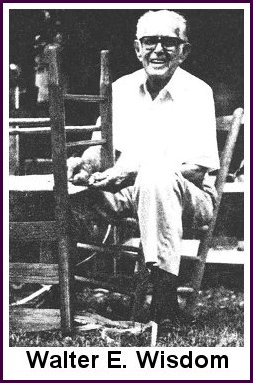Where Did The Hobo Go?
By WALTER E. WISDOM
Former President, White County Historical Society
For many years the hobo was a familiar person all
over the nation. Thousands of them were scattered across the country with the
heaviest concentration along railroads, and they would travel from place to
place by stealing rides on trains.
 They were organized in a way and had a sign
language which they printed on depots, tool houses, cattle loading pens, signs
and other places along the railroads. These were trail signs that helped the
next member to find the best food and lodging. N-2-4-R-1-L-4-L-B-D would be read
“Good food, 2 blocks north, fourth house on the right, also first house on left,
bad dog fourth house on left.” They also had crude maps of towns.
They were organized in a way and had a sign
language which they printed on depots, tool houses, cattle loading pens, signs
and other places along the railroads. These were trail signs that helped the
next member to find the best food and lodging. N-2-4-R-1-L-4-L-B-D would be read
“Good food, 2 blocks north, fourth house on the right, also first house on left,
bad dog fourth house on left.” They also had crude maps of towns.
Most towns where trains stopped regularly had at least one hobo camp where
they would build their fires to cook, make coffee and stay warm in cold weather.
These were located as near the track as they could find. It might be a grove of
trees with water nearby, or sometimes they would camp under a bridge, usually
two or more camping together. After coffee in the morning all but one (one would
stay in camp) would leave camp and go in different directions to beg food then
later meet back in camp for a “potluck” lunch from their morning effort. After
they had worked a town for a few days they would move on … and another bunch
would take their place.
When you talked with them they seemed to be happy and most of them could
tell you how to get rich quick. Honest. I have counted more than 30 on one train
but they seem to have disappeared overnight. Will conditions ever be such that
we will again have the hobo?
Walter Wisdom was president of the White County Historical Society in 1974
& 1975. He died May 24, 1988, at the age of 94.
 They were organized in a way and had a sign
language which they printed on depots, tool houses, cattle loading pens, signs
and other places along the railroads. These were trail signs that helped the
next member to find the best food and lodging. N-2-4-R-1-L-4-L-B-D would be read
“Good food, 2 blocks north, fourth house on the right, also first house on left,
bad dog fourth house on left.” They also had crude maps of towns.
They were organized in a way and had a sign
language which they printed on depots, tool houses, cattle loading pens, signs
and other places along the railroads. These were trail signs that helped the
next member to find the best food and lodging. N-2-4-R-1-L-4-L-B-D would be read
“Good food, 2 blocks north, fourth house on the right, also first house on left,
bad dog fourth house on left.” They also had crude maps of towns.